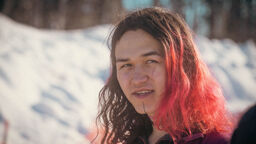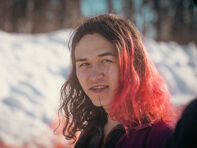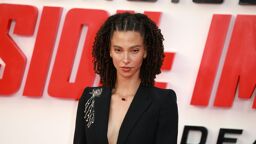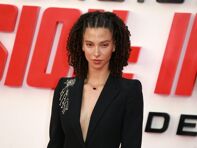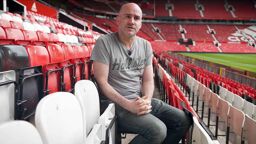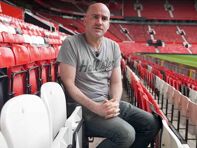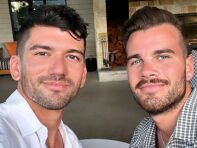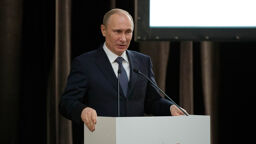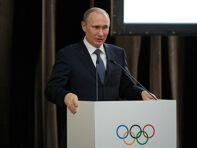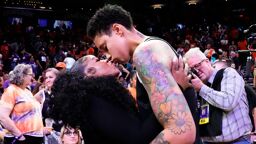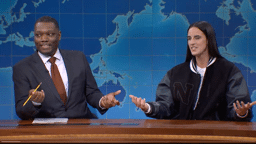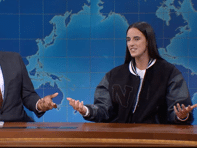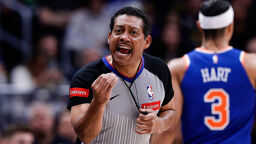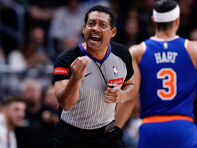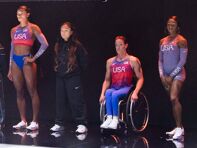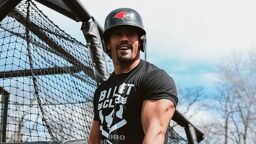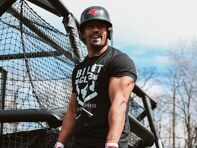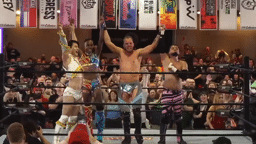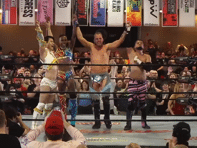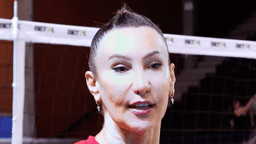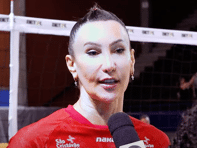Mikah Meyer is a man on a mission.
The 32-year-old adventurer is attempting to set a world record by becoming the youngest person to visit all 417 U.S. national parks. On Sunday, when he camped out at Death Valley National Park in California, he visited his 313th site, putting him 75% of the way there.
If all goes according to plan, Meyer will reach his goal on April 29, 2019, by climbing the steps of the Lincoln Memorial. Alaska, with its difficult terrain and logistical challenges, will be his big push this summer.
Meyer, who is openly gay, is attempting the feat — now in his third year — to honor the memory of his father, who died at 58 from cancer. After some hesitation about being so open about being gay, Meyer has embraced it and it’s become part of his selling point, especially when he speaks to religious groups.
His story has been told by U.S. and international media along his trek. He was featured this month in a great segment on the “Today” show, where the most fascinating angle was his outreach at churches, mainly in remote areas, as a gay Christian. His National Park videos air in 48 languages around the world through his media partner, Voice of America news.
Meyer lives in a white 2014 Ram Promaster cargo van he calls “Vanny McVanface,” and has logged 49,000 miles on the vehicle during the journey. He raises donations at www.mikahmeyer.com/donate, along with speaking gigs at churches, universities, companies and outdoor organizations.
I emailed with Meyer late last week while he was able to get a wifi connection at Lake Mead National Recreation Area in California to get an update on his journey.
Outsports: How many parks have you visited and how many left?
Meyer: I am now 75% complete with my park visits, having reached site No. 313 (exactly three-quarters) on Sunday, April 15. That leaves only 104 parks to go, but also some of the hardest to reach sites.
Included in the remaining ones are parks in Guam, the Northern Mariana Islands, six sites in Alaska’s Arctic Circle, and the least-visited park in the entire system (receiving about 100 visitors per year): Aniakchak National Monument/Preserve in Alaska, which requires a multiple-thousand dollar flight that only departs from its small-town launch point if there’s a day with safe enough weather.
Outsports: What will be the toughest to get to and when will you be done?
Meyer: Alaska has the second most NPS sites of any state (23), but only six of them can be accessed with a vehicle. The rest require bush planes, boats, and backcountry tours. This raises the cost so significantly that I’ve had to put it off until my final summer, and launch a special “$50 for 50” fundraiser to help me (hopefully) conquer The Last Frontier.
The drive from Seattle to Anchorage is as long as Seattle to Miami, and on the way back I’ll be crossing Canada to drop-in through Minnesota, so I will breathe a heavy sigh of relief when I make it to the Midwest this September.
If all goes to plan, I’ll wrap-up the Mid-Atlantic/Guam this fall and winter, then climb the steps of the Lincoln Memorial on April 29, 2019, and officially become the youngest person to visit all 417 National Park Service sites. At which point I’ll probably collapse.
Outsports: What has been most interesting as far as being gay?
Meyer: Before starting this journey, I was a bit frustrated with dating, and thought it’d be a great opportunity to meet interesting guys from around the country. Boy, was I wrong! Subverting all the gay stereotypes — using Tinder along my journey — I’ve been surprised at how uninterested people are in meeting in person once they find out I don’t live in their location.
Another unexpected outcome has been becoming an advocate for LGBT people in the outdoors. When I started this project, I thought I’d need to conceal my LGBT identity to make the trip palatable to the outdoors community and general public. However, as I began talking about being an openly gay adventurer, the outdoors community sort of thrust me into filling an advocacy void.
Because of the platform this project is giving me, I was able, for example, to talk to outdoor brands at America’s largest outdoor convention and encourage them to be the first outdoor brand to have a Pride Month ad. When I spoke of both the financial and historical benefits of inclusive marketing, most of them said, “We’ve never thought of that.” So it’s been a blessing to help represent LGBT people when there’s a real opportunity to make the outdoors community more inclusive.
Outsports: Have you had any negative reaction to being gay?
There are still many places in the country where the prevailing culture does not celebrate — or even seem to tolerate — LGBT people.
Meyer: While marriage equality is legal nationwide, there are still many places in the country where the prevailing culture does not celebrate — or even seem to tolerate — LGBT people. I’ve done a lot of local media on my journey, and in North Dakota, for example, not a single outlet mentioned the LGBT advocacy of my journey. In New York state, practically every headline seemed to say, “Gay adventurer takes Big Gay Road Trip to make America more Gay!”
So I’ve met a number of people who were very excited about my parks project until they found out I’m gay. And I even had one company pull their assistance because they said I started doing “too much LGBT outreach.”
While the financial loss was a burden, what broke my heart was realizing that LGBT people lose jobs — or might not ever even get them — because of this discrimination that likely isn’t usually as brazenly communicated as it was to me.
Outsports: How has the religious aspect changed your trip?
Meyer: Understandably, this aspect of my journey confuses a lot of people, especially given the church’s anti-LGBT history. But my dad was a Lutheran pastor, and I was raised in the church, so it’s always been a huge part of my life, even during the years that I struggled to become the happy, healthy gay Christian I am today.
One of the great lessons this journey has taught me is that it’s incredibly important to be true to oneself — even if the world says that to be successful you must be “safe and inoffensive.”
When I started, I thought I had to hide I was gay to be supported by the outdoors community, only to find out what made me special was my sexual orientation. I thought I’d further pigeonhole myself if it was known I was Christian, but when I started running out of my savings a year into this three-year project, it was the Christian community that saved my gay ass!
The churches I visited loved that I was a Christian owning my identity as a gay man.
My former boss, the choir director at the National Cathedral, suggested I “sing for my supper” at churches along the route and put my Masters in Voice to use. The amazing thing is that after struggling to fundraise from the outdoors community, the churches I visited loved that I was a Christian owning my identity as a gay man.
I started getting invitations from both LGBT-affirming churches, and those hoping my visit could help nudge the congregation in that direction, and eventually found myself following my father’s footsteps and preaching a sermon or leading a talk on LGBT-inclusion at a different church every Sunday.
Those churches have kept me on the road. They’ve allowed me to share a positive image of a gay Christian that has resulted in people around the world writing to share how they feel more comfortable being themselves after seeing this story. As one LGBT teen put it, “It showed me I can be both ordinary, and extraordinary!”
This aspect of my journey sort of culminated this month when I sat down with President George Bush’s daughter, Jenna Bush Hager, for an interview that aired on the “Today” show and painted LGBT Christians in a positive light. Of course I got a few nasty emails of run-on sentences in ALL CAPS, but overall it was such an amazing feeling to know that I’m able to use the publicity of this trip to create a role model that my 10-year-old, closeted self could have really used.
Quite simply, my Big Gay Road Trip across the U.S. would not have survived without the support of America’s Christians.
And as a member of an ostracized community — which is probably who Jesus would hang out with if on Earth today — I love that my journey is able to flip the script, Jesus style, on a world that says LGBT people and Christianity can’t coexist.
You can follow Meyer’s adventures on Instagram, Twitter or his website.



